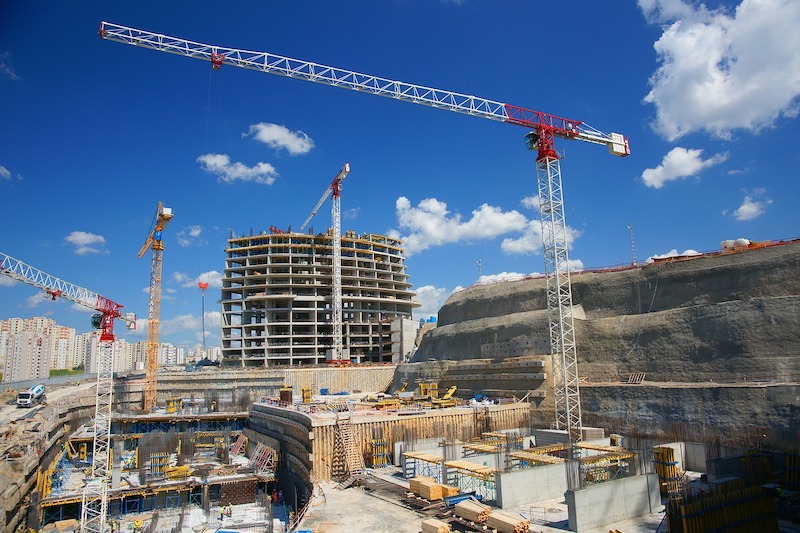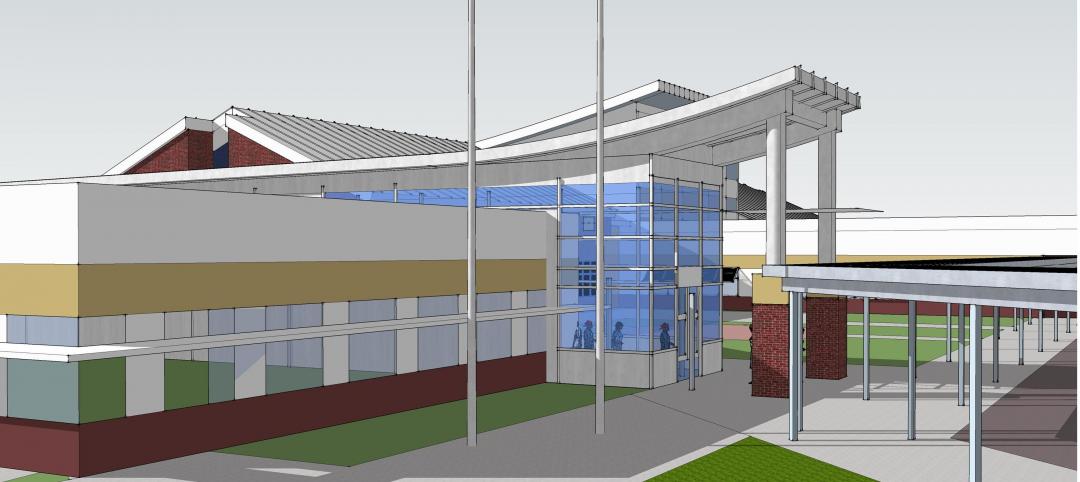Low- and no-cost measures can significantly reduce embodied carbon in mid-rise commercial office, multifamily, and tilt-up-style buildings, according to Rocky Mountain Institute.
Whole-building design, material substitution, and specification strategies can chop embodied carbon by 24% to 46% in those building types at cost premiums of less than 1%, the Institute says. A recent report by the Institute focused on carbon embodied in structural elements, which accounts for about 80% of a structure’s embodied carbon.
Whole-building design can have the biggest impact on embodied carbon, the report says. Material substitution and specification can also result in substantial embodied carbon savings, especially when targeting carbon-intensive materials such as concrete and steel.
A building’s structure and substructure typically make up the largest sources of up-front embodied carbon—as much as 80%. But the relatively rapid renovation cycle of building interiors associated with tenancy and turnover can account for a similar percentage of emissions over the lifetime of a building.
Related Stories
| May 25, 2012
Study: Safety inspections don’t hurt the bottom line
A new study suggests that random safety inspections by regulators help reduce injury claims without hurting profits.
| May 24, 2012
2012 Reconstruction Awards Entry Form
Download a PDF of the Entry Form at the bottom of this page.
| May 17, 2012
New standard for Structural Insulated Panels under development
ASTM International and NTA, Inc. are developing a new standard for Structural Insulated Panels (SIPs) that would create a path for U.S. manufacturers to meet the requirements of the Canadian building code.
| May 17, 2012
Webinar: ‘What Energy Codes and Standards Are Adopted Where and by Whom’
A June 12 webinar by the Construction Specifications Institute will outline what energy codes and standards have been adopted in each of the states for commercial buildings, and what is anticipated to be adopted in the future.
| May 17, 2012
California Governor orders new green standards on state buildings
California Gov. Jerry Brown issued an executive order recently that calls for all new or renovated state buildings of more than 10,000 sf to achieve LEED Silver or higher and incorporate clean, onsite power generation.
| May 17, 2012
New Zealand stadium roof collapse blamed on snow, construction defects
Heavy snowfall, construction defects, and design problems contributed to the collapse of the Stadium Southland roof in New Zealand in September 2010, a report has found.
| May 17, 2012
OSHA launches fall prevention campaign
The Occupational Safety and Health Administration (OSHA) recently launched an educational campaign to prevent deadly falls in the construction industry.
| May 15, 2012
Suffolk selected for Rosenwald Elementary modernization project
The 314-student station elementary school will undergo extensive modernization.













